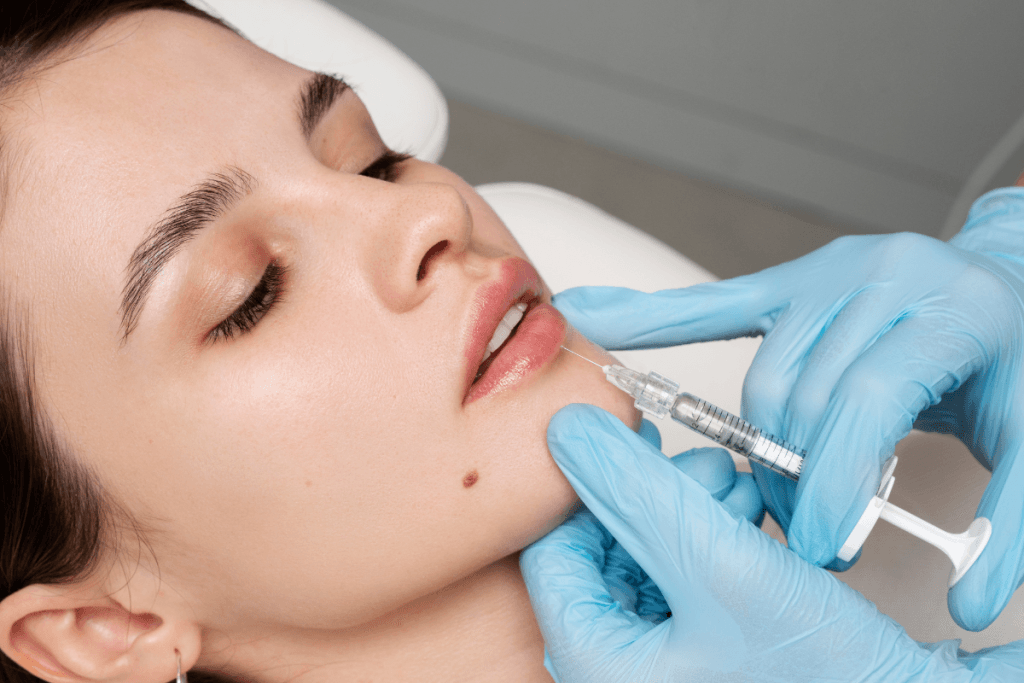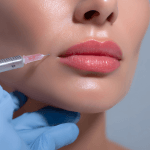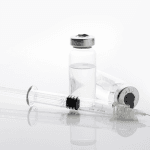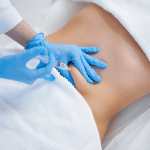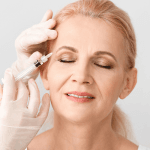Lip augmentation has become one of the most in-demand aesthetic procedures worldwide, as clients increasingly seek fuller, more defined lips with natural-looking results. For clinics and medical professionals, the wide variety of filler options available today can be both an opportunity and a challenge. Choosing the right product is crucial—not only for client satisfaction but also for maintaining trust and a reputation for delivering consistent outcomes.
This article explores the types of lip fillers available in today’s market, examining their unique benefits, how they differ, and what professionals should consider when selecting the right product for clients. By understanding their characteristics and uses, practitioners can make informed decisions that deliver safe, predictable, and high-quality outcomes.
What Are Lip Fillers?
Before diving into the different types of lip fillers, it’s important to revisit the basics. Lip fillers are injectable substances designed to add volume, smooth wrinkles, and enhance the shape of the lips. The most common fillers used in clinical practice today are hyaluronic acid lip fillers. Hyaluronic acid (HA) is a naturally occurring substance in the body that retains moisture, providing plumpness and elasticity.
Modern HA-based fillers are preferred because they are safe, reversible, and versatile. They allow practitioners to customize treatments for subtle hydration or more dramatic volume, depending on the client’s goals.
Different Types of Lip Fillers Today
The lips are delicate and dynamic, requiring products that move naturally and integrate seamlessly with tissue. Not every client needs the same outcome—some prefer subtle definition, while others want more volume. This is why manufacturers have developed multiple types of injectable lip fillers, each tailored for specific results.
Understanding what types of lip fillers are there can help providers match the right product to the client’s needs, ensuring optimal results and satisfaction.
Leading Lip Fillers
The following brands and formulations represent some of the most trusted options for lip augmentation. Each product has been designed with specific goals in mind, from subtle enhancement to noticeable volume:
1. Juvederm® Ultra and Volbella
Juvederm® has become a gold standard in aesthetics thanks to its smooth consistency and predictable outcomes.
- Juvederm® Ultra: Ideal for patients seeking noticeable volume, Juvederm Ultra provides fullness and definition to the lips. Its formulation allows for a plump yet natural look, making it a popular choice for younger clients or those desiring bolder results.
- Juvederm® Volbella: Specifically designed for subtle lip enhancement and fine lines around the mouth, Volbella integrates smoothly into tissue. It is ideal for clients who want hydration, slight volume, and refined contour without dramatic enlargement.
Both products are based on Vycross® technology, which creates a smoother gel and offers longer-lasting results—often up to 12 months.
2. Restylane® Kysse
Restylane Kysse is known for its flexibility and natural integration with lip tissue. It uses XpresHAn Technology™, which adapts to the dynamic movements of the lips, ensuring that smiles, pouts, and speech remain natural.
- Suitable for clients looking for a balance of volume and definition.
- Particularly effective for patients concerned about stiffness or an unnatural look.
- Provides results that can last up to one year, with high levels of patient satisfaction.
3. Belotero Balance
Belotero Balance is designed for smooth tissue integration, making it effective for subtle lip enhancements. Its unique manufacturing process, known as Cohesive Polydensified Matrix (CPM) technology, allows the gel to distribute evenly within the lips.
- Best for fine lip lines and subtle volumization.
- Especially suited for older patients or those who prefer a very natural outcome.
- Can also be combined with other fillers in a comprehensive treatment plan.
4. Teosyal Kiss
Teosyal Kiss is a Swiss-made filler specifically formulated for the lips. It offers high elasticity and resistance to movement, which is important for the lips’ dynamic nature.
- Designed to enhance volume and definition.
- Provides durable results lasting six to nine months.
- Ideal for clients who want noticeable yet natural fullness.
5. Aliaxin® FL Lips and LV Lips Volume
Aliaxin’s lip-focused formulations provide a versatile approach:
- Aliaxin® FL (Fine Lines): Suitable for refining and reshaping the lips, offering hydration and a natural finish.
- Aliaxin® LV (Lips Volume): Developed for clients who want fuller, more voluminous lips with enhanced definition.
Both formulations are based on pure HA without chemical crosslinking agents, promoting a more natural tissue integration and minimizing risks of lumps or irregularities.
Comparing the Best Lip Fillers
When evaluating the best types of lip fillers, professionals should consider several factors:
- Desired outcome: Subtle hydration vs. dramatic volume.
- Client profile: Younger vs. older clients, first-time vs. experienced patients.
- Treatment longevity: Some fillers last six months, while others can last a year or more.
- Flexibility and movement: Products like Restylane Kysse excel in adapting to dynamic lip movement.
- Smoothness and integration: Belotero and Volbella offer seamless integration for subtle results.
This comparison allows practitioners to recommend tailored treatments, boosting satisfaction and client loyalty.
Lip Fillers Price Considerations
For clinics, pricing is an important factor when choosing products. Lip fillers price can vary depending on brand, formulation, and longevity. While premium products may cost more, they often justify their price with predictable results, client satisfaction, and longer-lasting outcomes.
Practices should strike a balance between affordability and quality, ensuring they stock fillers that appeal to a broad spectrum of clients without compromising safety or results.
Safety and Best Practices
While hyaluronic acid fillers are generally safe, complications can occur if not administered properly. Practitioners should:
- Conduct thorough consultations to align expectations.
- Educate clients on aftercare and potential side effects.
- Be prepared to use hyaluronidase to dissolve filler in the rare case of vascular occlusion or unsatisfactory results.
- Regularly update their skills through training and certifications.
Maintaining these standards reinforces client trust and minimizes risks.
The Role of Clinics in Choosing the Right Fillers
As a clinic or medical practice, offering the best lip fillers is about more than just stocking well-known brands. It involves understanding client demographics, staying updated on new products, and developing expertise in application techniques. A client-centered approach ensures the right balance between artistry and safety.
Where to Buy Lip Fillers Online
Sourcing fillers from reliable suppliers is essential. Clinics should only buy lip fillers online from reputable distributors that guarantee authenticity, proper storage, and regulatory compliance. Avoiding counterfeit or unverified products protects both the clinic and its clients, ensuring consistent quality and results.
For clinics ready to stock trusted brands, explore our range of lip fillers available at MWS and source with confidence.
Conclusion
The market offers many types of lip fillers, each designed with specific goals in mind. From Juvederm Ultra’s bold plumping effect to Restylane Kysse’s natural flexibility, Belotero’s fine-line treatment, Teosyal Kiss’s volume and durability, and Aliaxin’s balance of refinement and fullness, there is no one-size-fits-all solution. Instead, the best lip fillers are those that align with the client’s unique anatomy, goals, and lifestyle.
For clinics, understanding the different types of lip fillers and selecting the right product is key to building client trust and loyalty. By offering a range of options, maintaining high safety standards, and sourcing fillers responsibly, providers can deliver results that truly speak for themselves.
Frequently Asked Questions (FAQs)
What are lip fillers?
Lip fillers are injectable gels, most often made from hyaluronic acid, that add volume and shape to the lips. They can smooth out fine lines, enhance lip symmetry, and restore a youthful look. Since hyaluronic acid naturally occurs in the body, these fillers are generally well-tolerated and safe. They also offer flexibility, as they can be dissolved if results are unsatisfactory.
How long do lip fillers last?
The longevity of lip fillers depends on the formulation, the client’s metabolism, and lifestyle factors. On average, lip fillers last between six months and one year. Some premium products, such as Juvederm Volbella or Restylane Kysse, can last up to 12 months. Regular maintenance treatments help sustain the results over time.
Are lip fillers safe?
Yes, when administered by trained professionals, lip fillers are considered safe. Most products on the market today are FDA-approved and have undergone extensive clinical testing. Side effects are usually minor, such as swelling or bruising, and resolve within days. Serious complications are rare but can be managed with proper protocols and expertise.
How much do lip fillers cost?
The cost of lip fillers varies depending on the brand, the amount used, and the clinic’s location. Premium products or those offering longer-lasting results may come at a higher price point. Clinics should communicate pricing clearly and emphasize the value of safety and quality.
Which type of lip filler is best for my clients?
The best filler depends on the client’s goals, age, and anatomy. For subtle hydration and smoothing, products like Juvederm Volbella or Belotero Balance may be ideal. Clients seeking noticeable fullness may benefit more from Juvederm Ultra or Aliaxin LV. Ultimately, the practitioner’s expertise in matching products to client needs is the key to successful outcomes.

